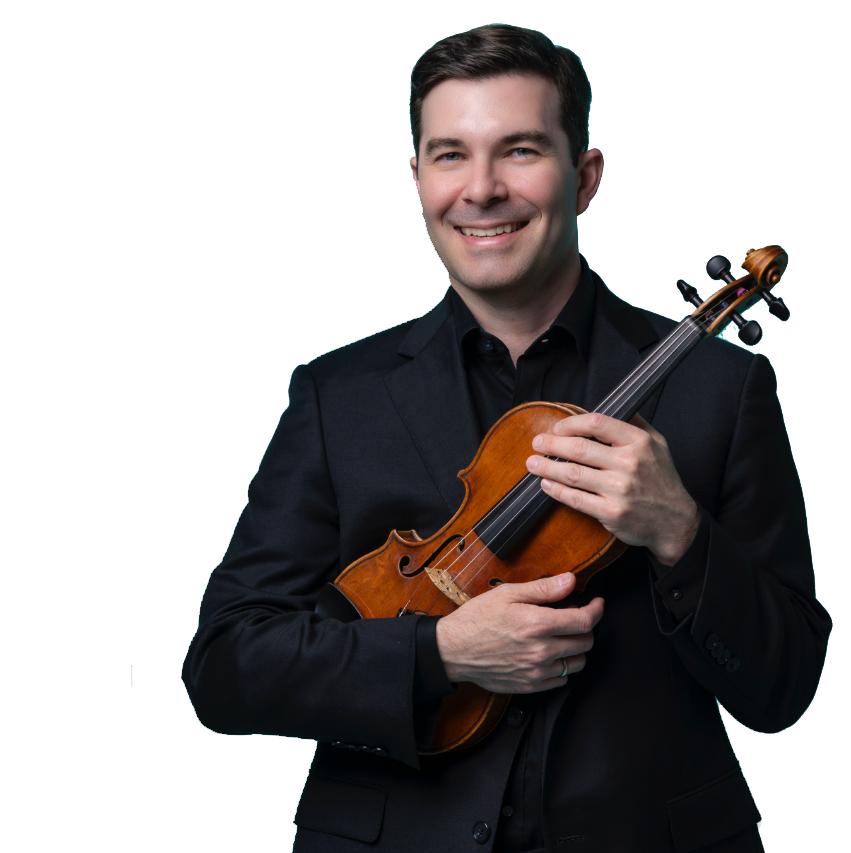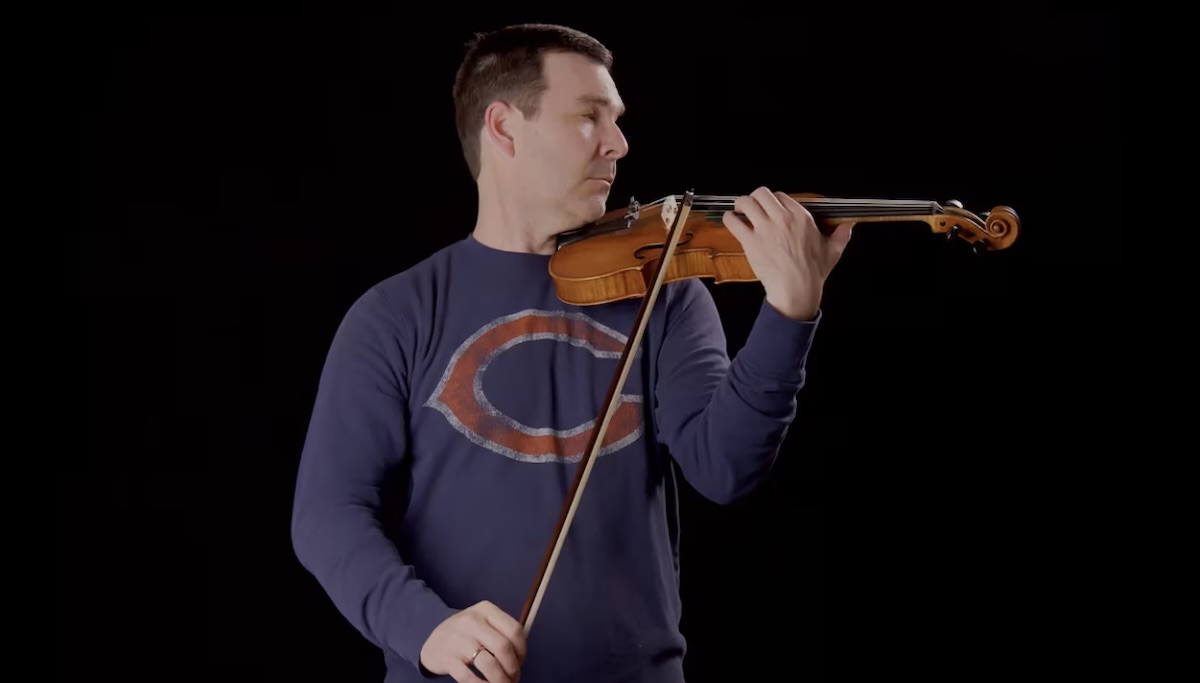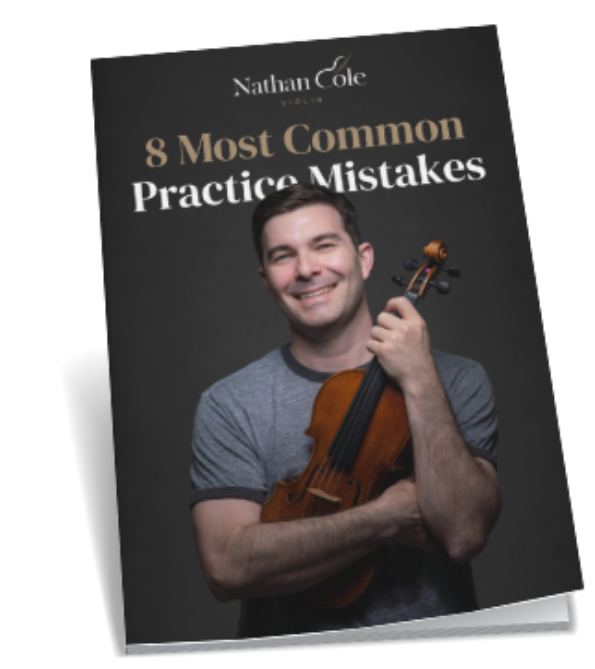NY Phil Audition Challenge Week 12

Now that we have an even 12 weeks until audition day, let’s take a detailed look at the audition packet itself. You have bookmarked it, haven’t you? Even better, print it and make a binder out of it! Less than $10 at FedEx. It will save you the trouble of fishing for loose pages when you need to flip back and forth between excerpts later on.
So open the packet with me. There’s so much info on page 1 that we’re going to spend a while here. First, the phrase “Section Violin openings (four rotating positions).” They elaborate on this later in the packet, but for now, note that there are four openings. This means, of course, that there could be as many as four people offered positions in the orchestra! And as few as zero. 🙂 This last situation, the dreaded “no hire”, can happen for any number of reasons, and not only because the orchestra in question is a bunch of hard-hearted snobs. But I would hope that, with four openings, at least one new violinist will be welcomed to the Philharmonic.
Next, the first important date: September 20, which is the deadline to apply for the position. That’s right, you can waffle back and forth about whether you’re going to take the audition until five weeks before! But the smart money is on those who decide well in advance. One of the worst ways to go through your auditioning life is to spend weeks or months preparing halfheartedly just in case you decide to audition. Either do it or don’t! When you practice toward a definite goal, your work takes on a different dimension.
Then a very interesting sentence: “You have the choice of playing a live preliminary audition in New York, or sending in a recording of the preliminary audition.” Now you may ask, “Who in their right mind would pay for a ticket to New York, pay for a hotel, and submit themselves to a scary live audition when they could record the music as many times as they want in the comfort of their own home?” Well, when you put it that way… but all the same, if it were my audition, I would make the trip to New York. As you may have already discovered during your video submissions, it’s not easy to make a good recording! And for a recording to be accepted in this audition, it won’t just need to be good. It will need to be nearly perfect. The standard simply has to be higher for recordings because the committee knows that candidates had unlimited time and attempts to make them. Some day, recorded auditions may become the norm, but until then, I would rather take my chances with a live audition than with a microphone. Nevertheless, note that the packet states that not everyone who wants a live audition will necessarily get one. Some will be required to make the recording instead. The Philharmonic will let you know within a week of the September 20 deadline, and that recording will be due October 20 (six days before the prelims begin).
There are four days of prelims, a semi-final two weeks later, and finals the day after that. So that’s two trips to New York if you pass through the prelims and don’t live in the city! At that point, if you pass through the semis to the finals then the Philharmonic will pay your travel expenses for your second trip. If you don’t advance, no reimbursement. A double whammy!
In the past, the Philharmonic has given candidates (at least in violin auditions) the news as soon as they finish playing their preliminary round: you advanced or you didn’t! No waiting around for an hour while the rest of your audition group finishes up, then assembling for what has to be one of the least comfortable gatherings possible. Just a quick yes or no from Carl, the longtime personnel manager whose signature appears on the second page of the packet! But this time around, I don’t see that indicated. Perhaps things will work differently this time around, or perhaps they just don’t include that information in the packet.
Now to the sight-reading: they say that it’s possible in the semis and the finals. What should you do about this? Not much. I’ve never seen an audition hinge on sight-reading. It’s possible, sure, but what can you do about it anyway, other than to practice sight-reading? That’s not a bad skill to have, but your time is probably better spent on the audition material or other performing. In fact, I can recall two violin auditions where questions remained about a candidate after their final round and so sight-reading was required. The sight-reading went rather poorly, but nobody was willing to cut someone for poor sight-reading. So they were hired anyway!
Note that an accompanist is provided for the concertos in the finals. That’s great news, since everyone will play with the same pianist and you don’t have to coordinate rehearsals, etc. The Philharmonic’s pianists have always been top notch and this will be one worry to cross off everyone’s list, if they’re fortunate enough to get that far. I would always rather play my concerto with accompaniment than without, and most people I know feel the same way. Too bad you have to wait until the finals to do it!
Now for the screen. The screen will be used until everyone has played once in the finals. Then, the packet implies, and tradition holds, that it will be taken down. New York’s other big orchestra, the Met, keeps the screen up the whole way, but just about every symphonic orchestra likes to see the candidates once. Perhaps a stage vs. pit thing?
How about the line “[we reserve] the right to dismiss any candidate at any point during auditions.”? It’s in there, of course, just in case someone complains that they didn’t get to play as much as they wanted or expected. Sorry, folks, we’re the New York Philharmonic and we’re running this show! Actually every orchestra includes a line like that, just so they’re covered.
Next, a winner or winners may not be named outright at the audition. There could be “trial weeks” or a “trial period” appended to the finals. These weeks are typically paid, but the candidates get to enjoy 200 eyeballs on them at all times. Depending on the orchestra’s contract, either a discussion or vote or both takes place at the end of the trial period. The final decision may be up to the music director alone, or the MD in conjunction with the audition committee. Usually for section positions, winning the job at that point is about what you don’t do rather than what you do: don’t mess up everyone else’s efforts! If you seem like the kind of colleague that everyone could see themselves working with for the next few decades, you’re in. Well, you still need to get tenure, but that’s another story!
Now although it often works out that a big orchestra like the New York Phil can arrange to make certain “difficulties” disappear for their audition winners, they don’t want to guarantee this. If you win the audition but have problems getting permission to live or work in the US, they want you to know that they may have to move on to the next candidate.
Finally, you’d be surprised how much misinformation gets thrown around during an audition. Carl wants you to contact him directly if you have any questions. Do I play this repeat? Will I be sitting or standing? Ask Carl, not your friend’s friend. Simple enough.
Then a paragraph for our day and age: the Electronics Disclaimer! They actually collect smart phones and tablets. I don’t see a need for them during an audition anyway, except that I might miss being able to listen to an inspirational playlist before going out on stage. Oh well, get an MP3 player that’s not a phone and listen away. By the way, don’t ever try to sneak something onto stage in order to record your audition. Yes, it would be a great resource for the future to know exactly how you played in your audition, and to compare it to how you felt it went and what feedback you got. But it’s not going to happen. And you will be disqualified if found out. So don’t do it!
Congratulate yourselves: you’re through the first part of the packet! Next is a page about exactly what kind of job you’re auditioning for: a Section Violin position. All violinists without a “fixed chair” or title are Section Violinists. However, there is a group of permanent Violin I players who never play Violin II. You’re not auditioning for that group. Therefore, if you win a position, you’ll be starting in the Violin II group (rotating around the 2nd violin section) and occasionally filling in on Violin I. That’s why there are both 1st and 2nd violin excerpts on the list. If you’re not in the Violin I group and a spot opens up there, you compete against your colleagues for that spot. These auditions, called “internal auditions”, are a real ordeal. Be glad this is an “open” audition!
I won’t spend as much time on the “Recording Specification Sheet”, but I can’t resist a few thoughts. As always, it’s about the playing rather than the recording quality, up to a point. That point is when a committee member says, “What a lousy recording!” So don’t stress about equipment too much. If you’re considering making this recording, you’ve probably done something like this before. If not, ask around as to how your friends and colleagues have done this on a budget. Speaking of budget, I wonder how many people have a Neumann KM 184 lying around? That’s nearly a $1000 microphone! I guess our violins and bows cost many times that; just another fact of life for the auditioning string player! Next, a good suggestion for the mic placement: eight feet up, six feet out. “Suitably quiet acoustical environment” to me means both that there shouldn’t be any distracting noises, and that you should record in a decent-sounding room but without excessive reverb. No editing, which means no splicing within an excerpt. You can certainly do as many takes as you need for each one. And read all instructions as to file type, stereo/mono, sound level, track names, dropbox, etc. So many people are allergic to following instructions, and you’re playing with fire if you expect a busy audition committee to cut you slack when there are so many recordings to get through!
Oh yes, the New York Phil tunes to A442. That means you should too, at least until this audition is done!
Next week I’ll give my thoughts on the specific excerpts in the prelim round: why they were chosen and what that tells you about how to prepare your audition program. But now that you have an understanding of the rules and regulations, let’s roll up our sleeves again and get to work!
You’ve likely discovered that there are certain things that feel comfortable on the violin, and other (even basic) things that need some work! Schradieck, Kreutzer and Dont will do that to you. So go with that feeling. Keep working on those areas that feel uncomfortable; hit them now while the overall workload is not too great. Add another 15 minutes to your daily practice if you can. If not, don’t sweat it. Daily work is the important thing.
By the way, if you’re part of the Challenge but not a subscriber to my newsletter at natesviolin.com, then you’re missing out on my practice guide. Once you sign up for my general email list, you get a guide that lets you know which practice strategies lead to results and which lead to frustration. You should remind yourself of these strategies often during the audition process. I’ve seen formerly good practicers start using the same one or two practice methods for an audition, only to get frustrated a few weeks into the preparation. Frustration leads to stagnation or even regression: taking a step back. Playing injuries are all too common as well. It bears repeating: take it easy and work slowly but every day. You have time!
If you’re adding 15 minutes to your practice time, strongly consider spending those minutes on scales in 3rds. If you already do 15 minutes of 3rds, then work on octaves, trills and left hand pizzicato. But most people don’t spend nearly enough time on 3rds. Every violinist I’ve met who can play 3rds and octaves in tune has also had a great overall technique. These things go together, and not by accident. I show you how in the Week 12 video.
This foundational work will help you in the Schumann Scherzo, our first excerpt. You’ll make a recording of the complete excerpt this week. I already have several YouTube videos on that excerpt, including some practice strategies. So I don’t repeat that in the Week 12 video; just start here. But I would like to continue our look at first impressions. So I’d also like for you to show me the very openings of Don Juan and the Mahler Adagietto. Examining the impressions you make in those two openings will help you understand so much of the work that will take place as you approach audition day.
Week 12 assignment
Your video should show me:
- a C-major scale in 3rds. For the advanced players, this should be a two-octave scale. If you’ve never played a two-octave scale in double-stops, give it a try! If it’s not happening this week, stick to one octave. And if you’ve never done 3rds before, do what you can. You’ll work on them for the rest of your life, but you might as well start now!
- a complete take of the Schumann scherzo.
- the first 4 bars of Don Juan
- the first 3 phrases of the Adagietto (up to the middle of bar 6)
Keep those videos coming!
Nathan

Scales: The Road
to Repertoire
Even if you’ve never played a scale before, violinist Nathan Cole of the Los Angeles Philharmonic will guide you through scale routines that meet you where you are, and build progressively alongside your playing.








Comment section